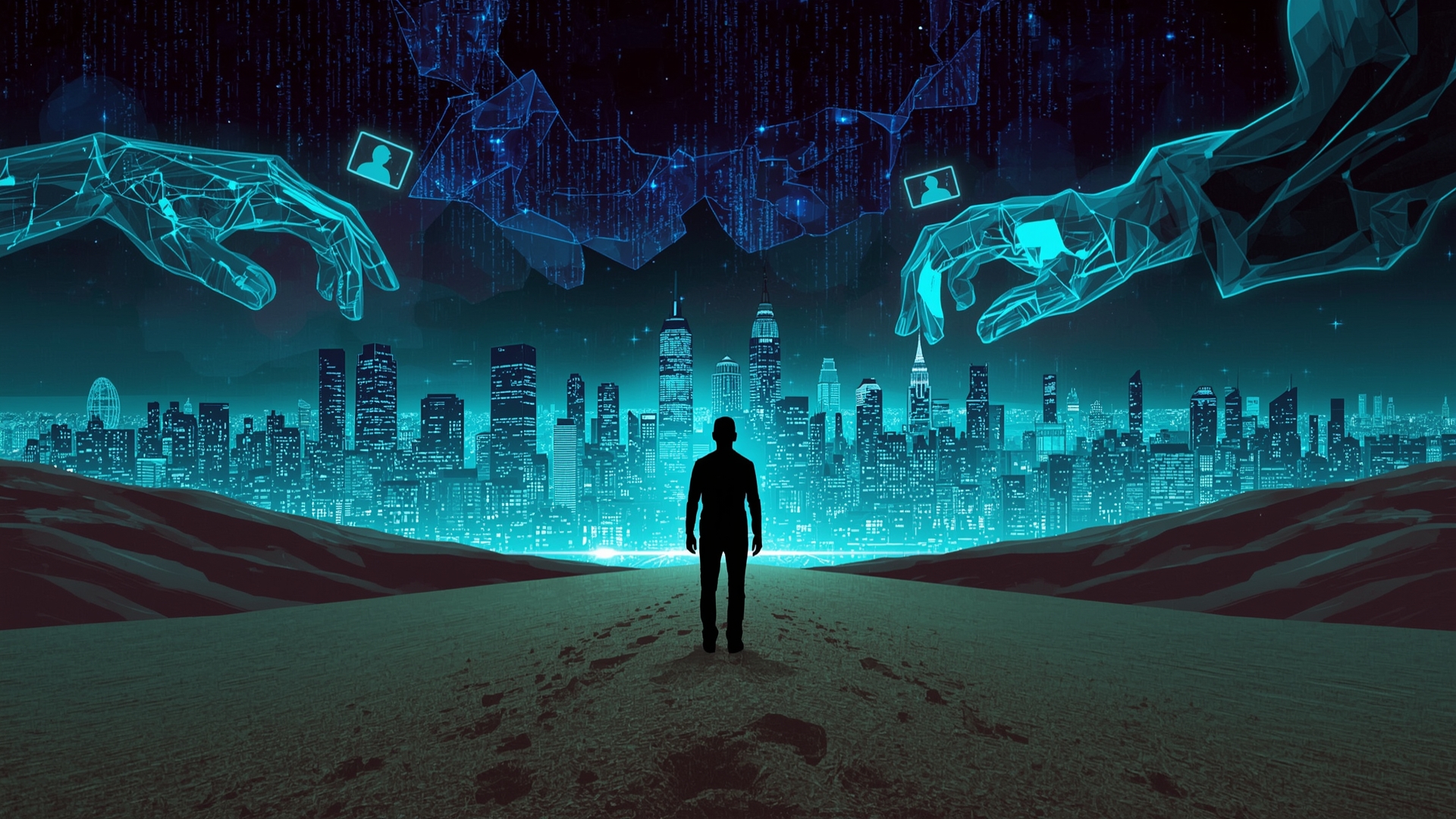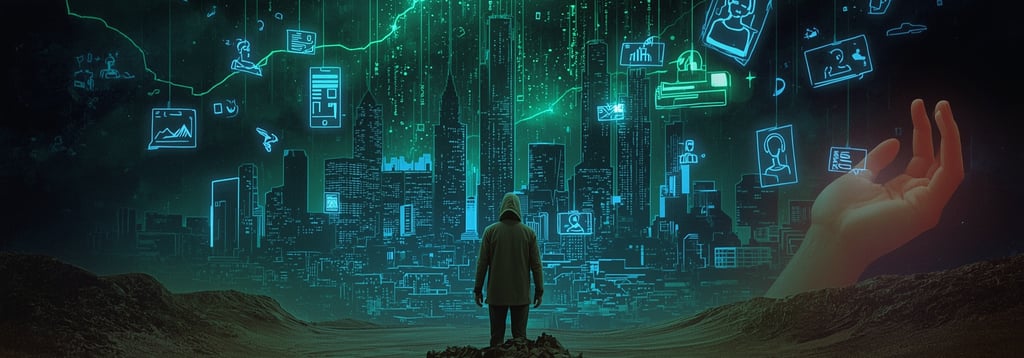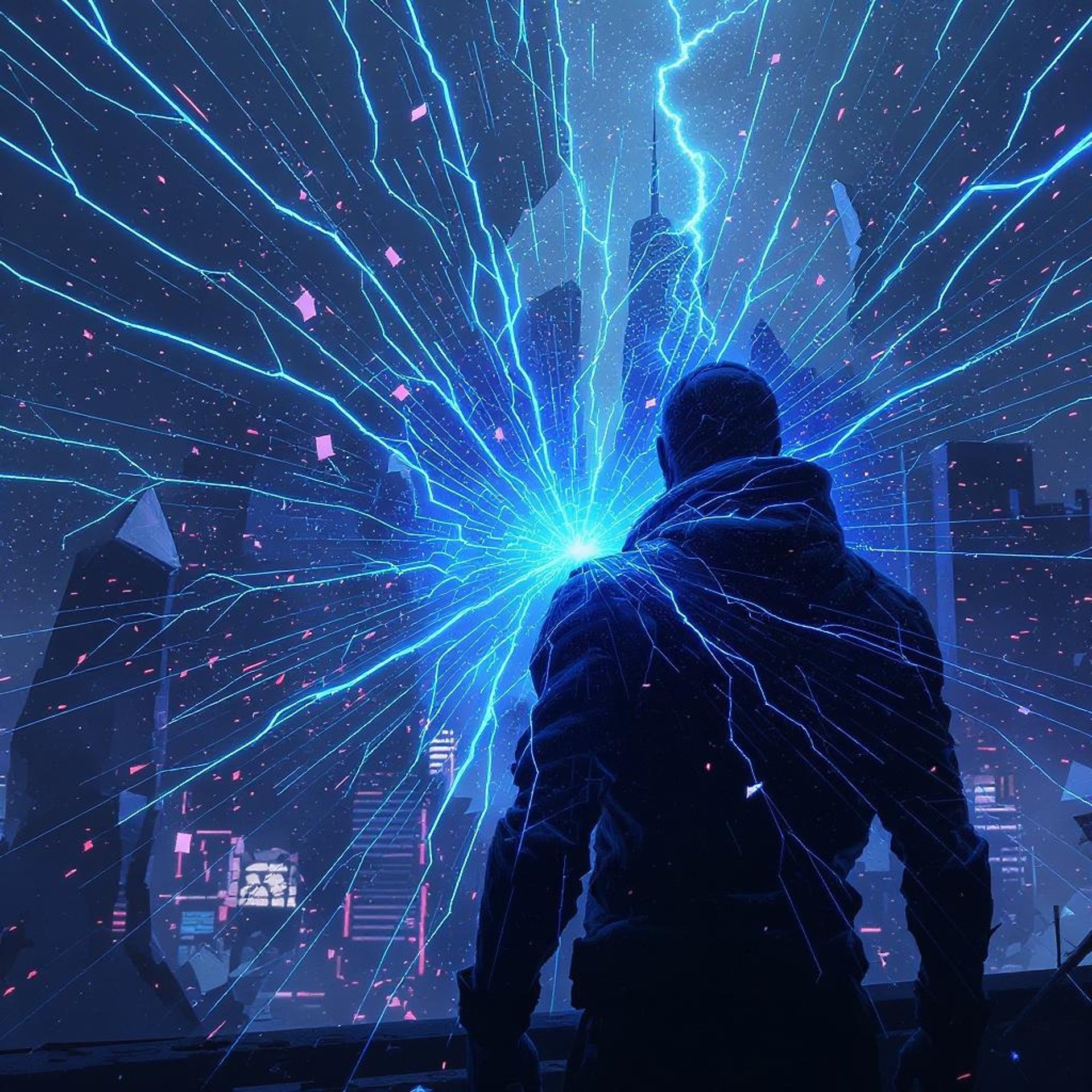
The Silent Metaverse: How AI, Algorithms, and Virtual Worlds Are Reprogramming Humanity
Explore how hyper‑competition is eroding the middle class, why the “median” person is vanishing, and the hidden risks of our “silent metaverse.” From economic data on shrinking middle incomes to the psychological phenomenon of digital solastalgia—grief for an always‑online world—this immersive article reveals the social, economic, and mental health impacts of AI‑driven virtual realities.


Imagine waking up one morning to find that “average” no longer exists. In today’s hyper‑competitive landscape, you either scale up with technology or risk disappearing entirely. At the same time, an invisible digital realm—the metaverse—grows beneath the surface, blending AI, mixed reality, and data into a new kind of existence. This “silent metaverse” isn’t just hype; it’s reshaping economies, social norms, and even our minds.
Economic Pressure: The Silent Death of the Middle Class
For decades, the middle class was the heartbeat of modern societies. It was there—in the space between survival and luxury—that people found stability, dignity, and the dream of progress. But that heartbeat is fading.
Slowly and silently, the economic center is collapsing. In traditionally stable economies—like those within the OECD—the number of households earning between 75% and 200% of the national median income is shrinking. In 1985, these households represented 64% of the population. By the mid‑2010s, that number had dropped to 61%. It may sound like a small shift—but it marks the structural erosion of a global foundation.
Meanwhile, the top 10% are accelerating. Their incomes have grown nearly one-third faster than the median over the past 30 years. Inequality is no longer a flaw in the system—it is the system.
Social & Psychological Fallout: The Anxiety of Being “Average” in a World That Only Rewards the Extraordinary
The death of the middle class isn’t just an economic issue—it’s a psychological wound that bleeds in silence.
Today, one in six middle-income jobs faces a high risk of automation. People who followed the rules—studied, worked hard, stayed out of debt—are now living with the constant fear of being replaced by an algorithm that never gets tired, never negotiates, and never asks for rights.
Over 20% of these families are already spending more than they earn. They’re caught in a slow-motion collapse—juggling bills, kids, mental health, and a society that quietly labels them as irrelevant.
The result? A silent epidemic of depression, burnout, and existential dread. In this new reality, being “average” feels like being disposable. If you don’t scale, you vanish.
What was once sold as a promise—that technology would give us all more freedom—is now revealing its darker truth: freedom is reserved for those at the top. Everyone else is fading into the background.
The Silent Metaverse
What Is the Metaverse (Really)?
The metaverse isn’t just a game where avatars dance. It’s not just Zuckerberg rebranding Facebook with a new name. The metaverse is the concept of a persistent, immersive, and interconnected digital reality, where people can live, work, consume, socialize, and even exist — without ever leaving their rooms.
But here’s the catch: it doesn’t have to look like sci-fi to already be here. The fusion of AI, mixed reality (VR + AR), blockchain, big data, and cloud computing has already created a new “space” — one that isn’t physical, but that deeply influences our physical lives.
🌐 Where Did It Come From?
The term “metaverse” was coined in 1992, in Neal Stephenson’s cyberpunk novel Snow Crash. It was a digital escape from a crumbling world.
In the 2000s, Second Life brought the concept mainstream — but the tech wasn’t ready.
The real shift came with the rise of:
Virtual Reality (VR)
Augmented Reality (AR)
5G & Cloud Computing
Generative AI
Blockchain & NFTs
Edge Computing
Biometric Sensors
Mixed Reality Headsets
What was once fiction became interface. And what was interface became market.
How Do We Access It Today?
You might think the metaverse is still far away. But it's already in your pocket. These are the most common gateways:
VR Headsets (Meta Quest, PSVR2, HTC Vive, Apple Vision Pro)
AR Apps (Snapchat Lenses, TikTok effects, Instagram filters)
3D Social Worlds (Roblox, VRChat, Fortnite Creative, Spatial.io)
Virtual Workspaces (Microsoft Mesh, Meta Workrooms)
Blockchain Platforms (Decentraland, The Sandbox)
But don’t be fooled: the real metaverse doesn’t need goggles to exist. It lives in every app tracking your face, every AI filtering your thoughts, and every platform teaching you how to “be.”
The Real Threat: The Illusion of Choice
You think you’re just playing in the metaverse. But slowly, it’s rewriting your perception, your identity, your time—and soon, your body. The line between simulation and reality isn’t being crossed. It’s being erased.
Why This Matters?
Identity Crisis: Avatars can set perfection standards your real self can't meet, eroding self‑esteem.
Addiction Loop: Algorithms reward longer sessions. Each logout triggers a mini‑withdrawal.
Depersonalization Risk: VR fatigue isn’t mythical; it has real psychological echoes, even if often temporary.
Disconnect from Reality: As virtual feedback becomes meaningful, actual human interaction feels hollow.
Digital Solastalgia: Grief for an Always‑Online Reality
“Solastalgia”—originally coined for ecological loss—is now manifesting in digital form: a chronic distress from living under constant online scrutiny. Traditional solastalgia arises from environmental degradation; digital solastalgia stems from never unplugging and losing sense of “home” in physical reality WikipediaPMC.
Symptoms mirror anxiety, depression, and identity confusion. Users report a sense of loss when disconnected, akin to mourning an ever‑present virtual environment. The toll extends beyond individuals, threatening communal ties and shared reality.
Rituals to Reclaim Presence
Scheduled “Offline” Rituals: Daily tech‑free periods to ground yourself.
Mindful Transitions: Simple ceremonies—like lighting a candle before logging off—to mark digital boundaries.
Community Anchors: In‑person meetups, local clubs, and nature walks to rebuild shared, physical connections.
The “average” human is under siege—from economic displacement to immersive digital realities that blur fact with simulation. But awareness is the first step toward sovereignty. By understanding the forces at play—market pressures, the silent metaverse, and digital solastalgia—we can craft rituals, policies, and practices that protect both our wallets and our well‑being. The question isn’t whether you’ll be left behind by AI and the metaverse; it’s whether you’ll choose to reclaim your humanity before “average” becomes extinct.
